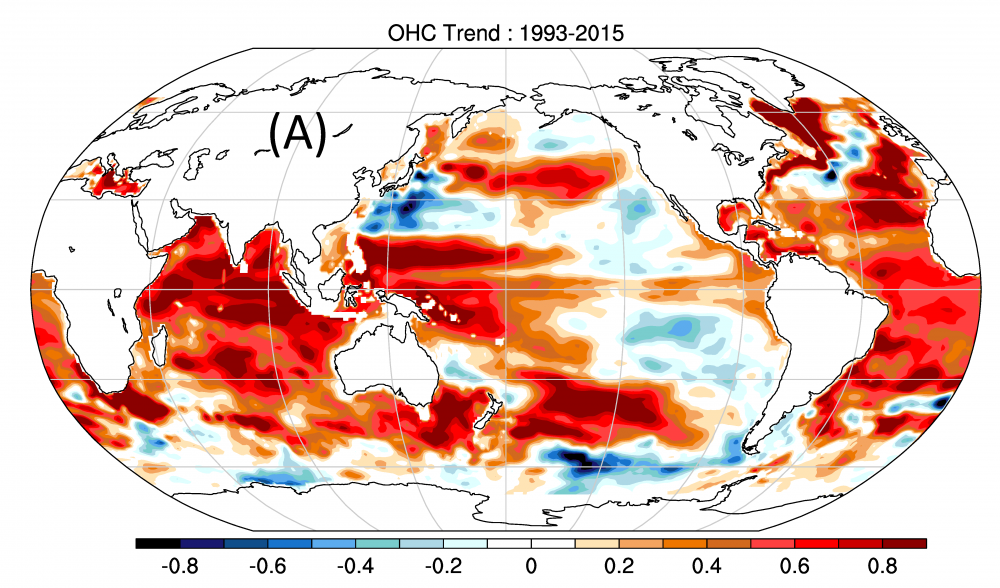
For the fourth year in a row, the world’s oceans recorded extreme heating in 2022 on account of anthropological activities.
- Ocean Heat Content (OHC) is the amount of energy absorbed by and stored in the oceans.
- OHC is measured in joules, the unit of energy.
- When sunlight reaches the earth, oceans absorb this energy and store it as heat.
- While the heat is first absorbed at the surface of the water body, some of it is eventually disbursed throughout.
- Water also has a higher heat capacity than air, which means that water heats up slower than air and can store much larger amounts of heat.
More than 90% of the excess heat accumulated in the earth’s climate is deposited in the oceans.
- Climate change and OHC – OHC is an important indicator of climate change.
- An increase in greenhouse gas emissions traps more energy from the sun in the atmosphere.
- Rising ocean temperatures strengthen the exchange of energy from oceans to the atmosphere by increasing the evaporation of water and thus the quantity of atmospheric moisture.
- This leads to changes in global precipitation patterns as well as temperatures.
- Stratification and salinity-contrast index, along with OHC, are important elements in quantifying climate change.
- Stratification – Vertical stratification happens when there is change in the density of water due to temperature and salinity changes in oceans.
- This stratification hinders water mixing and consequently the exchange of heat, carbon, oxygen and so on between layers.
- Salinity-contrast Index – Defined as the difference between the salinity averaged over climatologically high-salinity and low-salinity regions.
- Salinity-contrast index, an indicator of a change in the water cycle, reached its highest level on record in 2022.
- Salinity determines water density, which drives the circulation of water in oceans.



